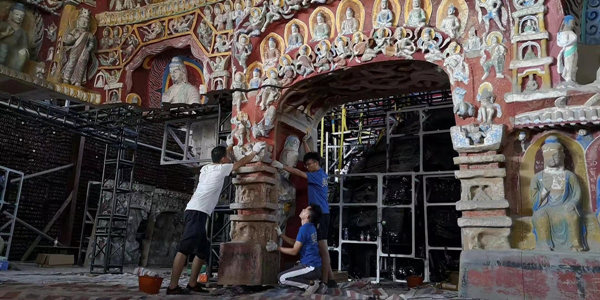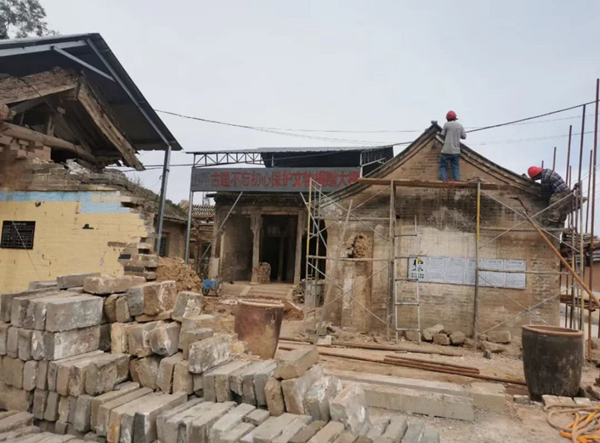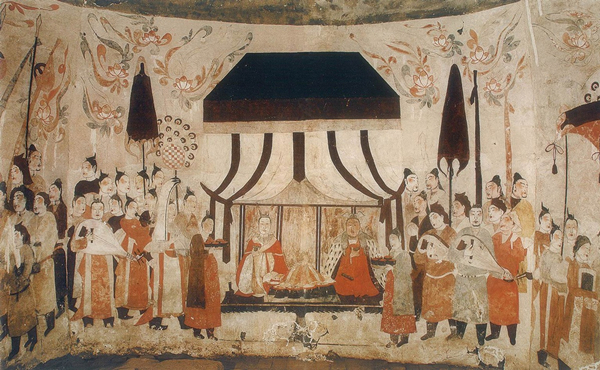Technology brings priceless relics to the public
Updated: 2023-07-26

Workers make a full-sized replica of Yungang's relics with 3D-printers at the Yungang Grottoes in Datong, Shanxi province. [Photo provided to chinadaily.com.cn]
Over the past decade, Shanxi province has made continuous innovations in capital investment, personnel training, and science and technology application to promote the utilization of its cultural relics, which has helped traditional Chinese culture glow with new vitality.
The province launched the cultural relic digital protection project in 2014 to enrich the means of cultural relic display and strengthen the excavation and interpretation of the cultural relics' meaning.

Workers carry out cultural relic preservation and restoration work in Shanxi province. [Photo provided to chinadaily.com.cn]
Wearing smart glasses, visitors are presented with virtual murals from the tomb of Xu Xianxiu, a high-profile official of the Northern Qi Dynasty (550-557) at a museum in Taiyuan, capital city of Shanxi.
The tomb is considered to have some of the best-preserved murals from the time period, but due to preservation limitations, it is impossible for visitors to view the murals on-site.
The Yungang Grottoes, located in the northern Shanxi city of Datong, were built during the Northern Wei Dynasty (386-534). With the help of 3D-printing technology, people across the world now have the chance to admire a full-sized replica of Yungang's relics.

A photo shows the interior of the Yungang Grottoes in Datong, Shanxi province. [Photo provided to chinadaily.com.cn]
The Yungang Grottoes were added to the UNESCO World Cultural Heritage list in 2001.
Since Yungang Grottoes Academy was established in February 2021, it has operated a number of museums and galleries, allowing visitors to explore the grottoes' history and hidden details with the assistance of digital, virtual and augmented reality technology, as well as replicas made via 3D-printing.
A project was launched in 2022 to enroll a total of 600 students over a span of five years, specifically for 117 localities across the province in need of protection professionals.

A mural in the tomb of Xu Xianxiu in Taiyuan, Shanxi province. [Photo provided to chinadaily.com.cn]
These students will be offered general education on relic preservation during college, free of tuition, and are duty-bound to work for pre-designated employers after graduation.
The 19-year-old Li Jingyi, among the first batch of students joining the project, will receive training in archeology, cultural heritage architecture, and museum studies at Shanxi University and return home for work when she finishes college.
"Ancient architecture exudes a beauty bestowed by history. I'm fascinated with that, and I'd love to work for the protection of cultural relics in my hometown," she said.



